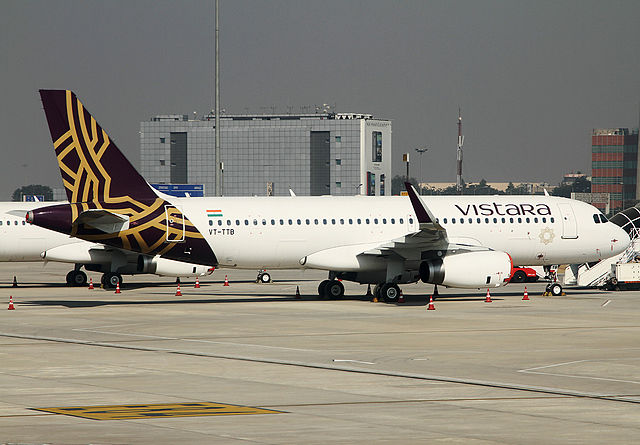




18 Jul 2025
First Aircraft, First Mistake? What Start-Up Airlines Can Learn from Transition Pitfalls
Starting an airline is ambitious, exhilarating — and incredibly complex. From regulatory approvals to funding rounds, route planning to marketing — there’s no shortage of hurdles. But amid the operational chaos, one of the most underestimated stages is often the most expensive:
The first aircraft transition.
At Acumen Aviation, we’ve seen it time and again — emerging carriers getting tripped up not by flying the aircraft, but by acquiring and inducting it.
From redelivery confusion to poor record management and lease misalignment, these early mistakes can drain cash, delay launch timelines, and strain relationships with lessors. But with the right guidance, they’re entirely avoidable.
In this blog, we break down the most common transition pitfalls new airlines face — and how Acumen helps carriers get their first aircraft right the first time.
The Pressure of the First Aircraft
For a start-up airline, the first aircraft isn’t just a technical asset — it’s a milestone. It signals operational readiness, investor confidence, and market intent. But that pressure often leads to rushed decisions or overlooked details.
Let’s be clear: transitioning an aircraft isn’t just about picking one off the shelf. It’s a layered process involving:
- Legal and lease structuring
- Technical inspections and modifications
- Airworthiness documentation
- Regulatory compliance
- Redelivery coordination with the previous operator
- CAMO setup and MRO selection
- And of course, tight timelines
Getting even one of these wrong can throw an entire launch into uncertainty.
Pitfall 1: Underestimating Transition Timelines
Aircraft transitions take time — especially when dealing with used aircraft or multi-operator histories.
Many start-ups assume that an aircraft can be leased and ready to fly in a matter of weeks. The reality? It often takes several months, depending on the condition of the aircraft, documentation completeness, regulatory approvals, and maintenance needs.
Acumen’s advice: Build realistic timelines into your launch plan, and engage technical support early — not when delays begin.
Pitfall 2: Incomplete or Inconsistent Records
Records are as important as the aircraft itself. Missing component traceability, unverified maintenance records, or unclear modification histories can delay acceptance or even breach regulatory thresholds.
Start-up airlines often lack in-house teams experienced in evaluating these documents — and lessors are unlikely to hold the aircraft indefinitely while issues are resolved.
Acumen’s advice: Conduct a detailed records review before committing to lease terms. We help you validate records, understand redelivery conditions, and avoid last-minute surprises.
Pitfall 3: Choosing the Wrong Aircraft for the Mission
In the rush to get airborne, some airlines lease what’s available — not what’s optimal.
Whether it’s an aircraft that’s too large for expected load factors, too maintenance-heavy for early budgets, or incompatible with planned routes, a poor aircraft match can set a new airline back before it even starts.
Acumen’s advice: Make aircraft selection part of your broader commercial and operational strategy. We assist in evaluating technical performance, fuel efficiency, and maintenance forecasts against your planned usage profile.
Pitfall 4: Overlooking the Importance of CAMO
The CAMO (Continuing Airworthiness Management Organisation) function is critical — but new carriers often underestimate the time and complexity of setting it up properly.
From compliance tracking to maintenance scheduling and airworthiness review certificates, a weak CAMO setup can lead to regulatory delays or costly oversights.
Acumen’s advice: Don’t leave CAMO for later. Whether in-house or outsourced, we help you structure a CAMO solution aligned to your launch plan — including training, process design, and digital tools.
Pitfall 5: Misaligning Lease Terms with Operational Reality
Start-ups often lack negotiating leverage with lessors, but that doesn’t mean they should accept terms they can’t meet.
Examples we’ve seen:
- Return conditions that require upgrades not budgeted for
- Utilisation clauses that don’t reflect planned flying patterns
- Penalties for modifications that were necessary for regulatory approvals
Acumen’s advice: Lease planning isn’t just legal — it’s technical. We help translate commercial terms into operational impact, ensuring you don’t agree to what you can’t deliver.
How Acumen Supports Emerging Airlines
Launching a new airline is hard enough — you shouldn’t have to learn painful aircraft transition lessons on the fly.
At Acumen, we support start-ups by offering:
- Technical due diligence: So you know what you’re getting before you sign
- Records validation: To avoid compliance gaps and acceptance delays
- CAMO and airworthiness advisory: For smooth regulatory navigation
- Maintenance and redelivery planning: So your first flight isn’t pushed back by avoidable technical issues
- Training for your team: Building in-house confidence in lease, maintenance, and compliance responsibilities
We act as your bridge between the technical, regulatory, and commercial worlds — so you can focus on building your airline, not fixing foundational mistakes.
Final Thought: Avoid First Flight Friction
The first aircraft lease isn’t just a milestone — it’s a make-or-break moment.
Handled well, it sets your airline up for credibility, confidence, and operational smoothness. Handled poorly, it becomes a cost sink and a reputational risk.
At Acumen, we’ve supported both start-ups and established players in their aircraft transitions. If you’re preparing for your first fleet addition — or simply want to understand what to watch for — we’re here to help.
Let’s make your first aircraft a launchpad, not a lesson.





